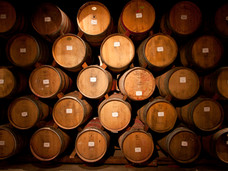
A BRIEF HISTORY OF BEER IN KENT
No crop is more closely associated with Kent than the hop, even if the hop-garden is now quite rare. The collective memory is kept alive by physical evidence of the distinctive oast-house, by the Museum of Kent Life (sic) and other attractions. Literary reinforcement comes from writers drawn to describe the annual trek of East-enders ‘hopping down in Kent’.
In the nineteenth century, the hop was the best recorded of all crops because, uniquely, it was dutiable at the point of production, and because of its importance for employment. The main sources are the Excise records from 1807 to 1861, tithe commutation records, estate records and official enquiries in 1835, 1857 and 1890. Directly and indirectly, much of the agricultural history of Kent, by parish, is to be found there. Hops are not native to this country, but Kent was an ‘early adopter’.
Imported hop seeds were found in the remains of a tenth century boat found at Graveney, presumably to serve the requirements of the monks at Canterbury.i Port books show that hops were still imported into Kent in the sixteenth century. The Tudors encouraged hop growing as a form of import substitution, and in 1524 granted a licence to Sir Edward Guildford of Kent to export hops. Flemish growers were attracted to the county. In 1574, Reynolde Scot, of Ashford, wrote a very practical handbook for prospective hop growers.ii By 1655, a return of the national acreage of hops showed that one-third lay in Kent. Celia Fiennes noted ‘the great Hopyards on both sides of the road’ between Sittingbourne and Canterbury in 1697.iii Houghton referred to massive hop production around Maidstone in 1699. Defoe described East Kent as the ‘Mother of all Hop Grounds’ in 1725.iv
There are three areas where the soil, climate and aspect are good for hops:
-
East Kent, with its brick-earths, mainly around Faversham and Canterbury, always known for high quality hops;
-
Mid-Kent, mainly the Medway valley, including the Maidstone district, on the Lower Greensand;
-
Weald and High Weald, particularly the East Peckham and Yalding, and the large parishes to the south and east of Yalding, with their Weald Clay and Tunbridge Wells Sand.











